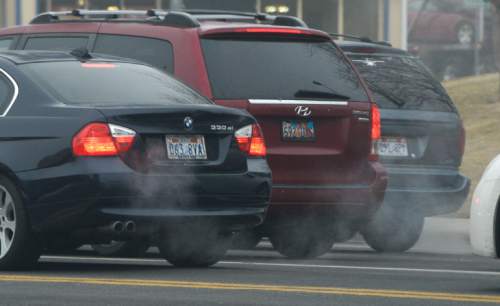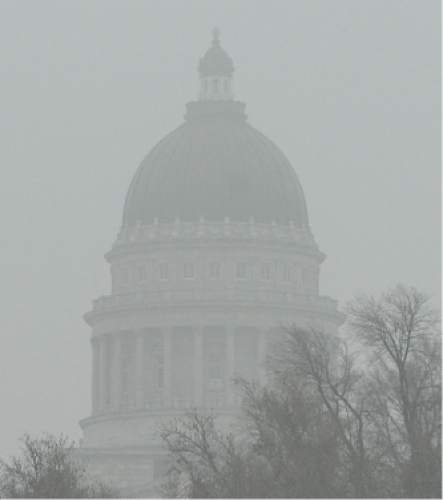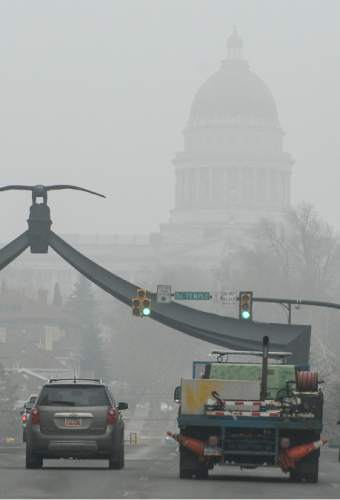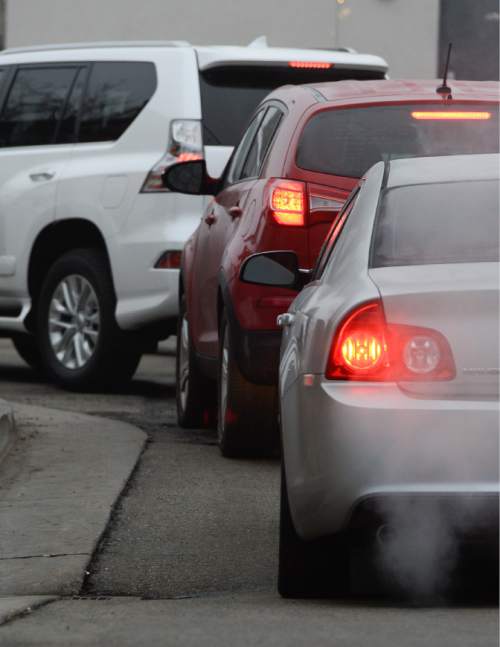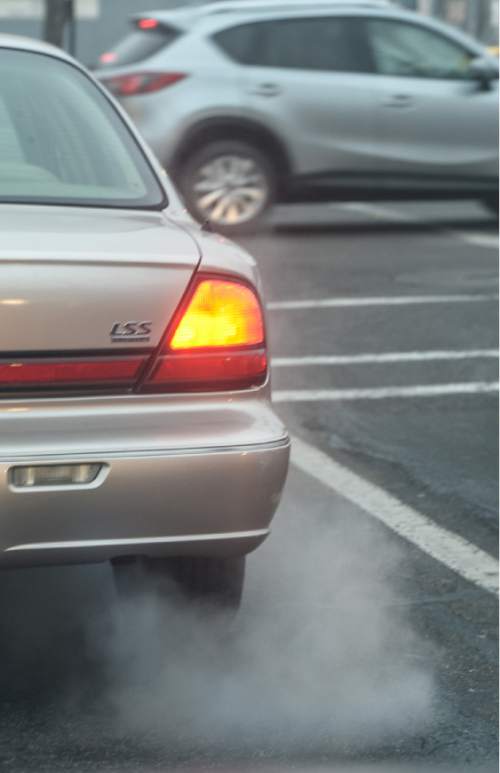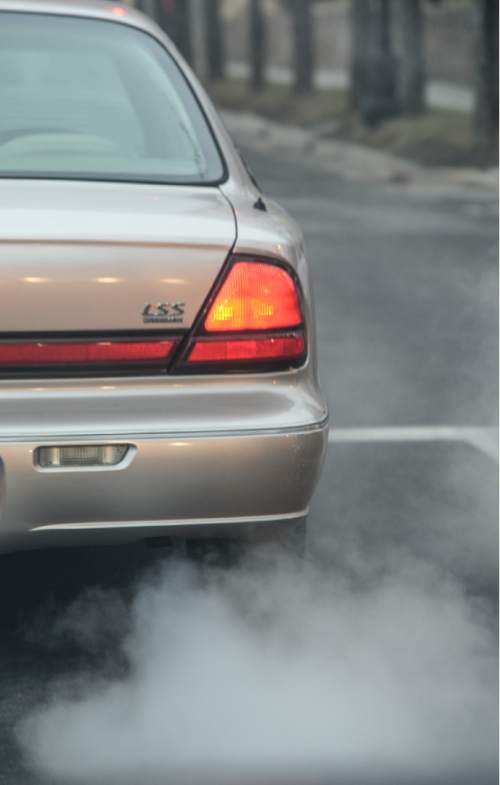This is an archived article that was published on sltrib.com in 2016, and information in the article may be outdated. It is provided only for personal research purposes and may not be reprinted.
This week's inversion is shaping up to be the first long-term period of significantly poor air quality since 2013 — and it could be here for days to come if the weather doesn't cooperate by providing a storm.
Salt Lake City registered a red-air day Wednesday, with the Utah Division of Air Quality's monitors reporting PM 2.5 concentrations as high as 70 micrograms of particles per cubic meter of air in the Salt Lake Valley.
The "acceptable" level for PM 2.5, according to the Environmental Protection Agency's health-based air standards, is 35 micrograms per cubic meter.
The murky air hanging over the Salt Lake and Utah valleys is probably turning a few heads because it's been a while since Utah has seen an air quality episode like this, said Bo Call, the DAQ's air-quality monitoring manager.
It's a consequence of a prolonged temperature inversion that started earlier in the week. In an inversion, warm air moves over the top of Utah's bowl-like valleys, acting like a lid that traps the cold air beneath it. This traps cold air and everything in it within the valley until another body of air, usually a cooler, stormier front, moves in to stir things up.
This kind of atmospheric phenomenon was also responsible for the notable inversions in 2013, Call said. That January, he said, a two-week inversion pushed PM 2.5 concentrations up to 50 micrograms per cubic meter. In Utah County, where temperatures were so cold for so long that Utah Lake froze over, PM 2.5 counts reached into the 80s and 90s. At one point, Provo logged an all-time high of 124 micrograms per cubic meter.
Since then, Call said, "there's been the odd day that's a high value, but not nearly as much."
Utah Valley's PM 2.5 counts topped out at 49 micrograms per cubic meter Wednesday, while Box Elder County reached 45. Weber County reached 51.
Any pollutants under 2.5 microns in diameter are considered as PM 2.5, particulates so tiny they lodge deep in lung tissue.
This inversion is expected to linger for a while, prompting mandatory solid-fuel burning bans in Salt Lake, Utah, Davis, Weber, Cache, Box Elder and Tooele counties. Call said there is some hope that a weak storm system expected to come through this weekend could break the inversion.
Or, he said, the recent warming trend might push temperatures high enough to at least reduce the strength of the inversion. Otherwise, the forecast doesn't call for stormy weather until Feb. 18.
The Utah Climate Center expects the current inversion to continue for about a week.
Until then, Call said, "if you can't see the buildings or the mountains or anything else, that's kind of bad."




